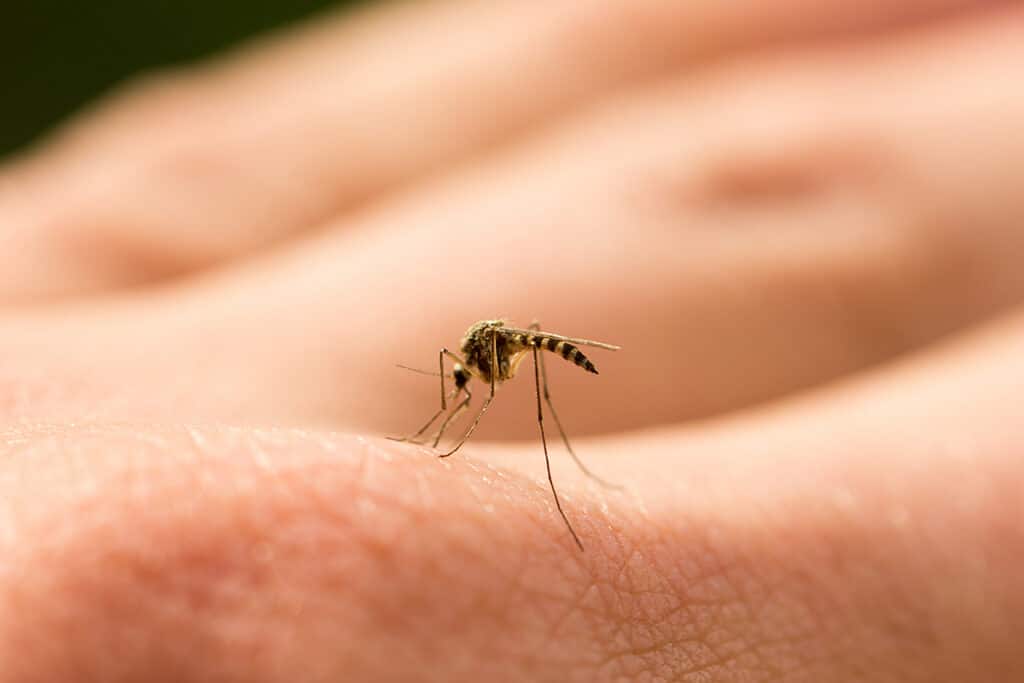More Than Bumps: Bug Bites That Blister

Bug bites are a common nuisance for anyone who enjoys spending time outdoors. While most bites result in minor itching and redness, some can cause more severe reactions, including blisters. Understanding which bug bites can blister and how to treat them effectively is essential for maintaining your comfort and health. We will explore the causes of blistering bug bites, the insects responsible, and the best ways to treat these reactions.
What Causes Bug Bites to Blister?
When an insect bites or stings, it injects saliva or venom into the skin. For some people, this foreign substance triggers an immune response, leading to inflammation, redness, and, in more severe cases, blisters.
Blisters form as a protective mechanism. Your body reacts with blisters to separate the affected area and to prevent the infection from spreading. Factors that can influence whether a bug bite blisters include the type of insect, the individual's immune response, and whether the bite was scratched or otherwise irritated.
Common Insects That Cause Blistering Bites
Mosquitoes
Mosquito bites typically result in small, itchy bumps. However, for those with a stronger allergic reaction, these bites can swell significantly and even blister. This reaction, known as Skeeter syndrome, is more common in children and people with sensitive skin.
Spiders
Certain spider bites can cause blisters, especially those from more venomous species. Brown recluse spiders, for instance, deliver a venom that can lead to a severe reaction, including blistering, necrosis (tissue death), and systemic symptoms. Black widow spider bites can also cause intense pain and blistering, though these reactions are less common.
Bed Bugs
Bed bug bites often form in clusters or lines. While they usually result in itchy red welts, some people may develop blisters. These bites are often mistaken for other types of rashes, but the pattern and timing (usually occurring at night) can help identify them.
Fire Ants
Fire ants inject venom that causes a burning sensation, followed by red, swollen bumps that can turn into pus-filled blisters. These bites are particularly painful and can cause significant discomfort.
Fleas
Flea bites generally result in small, red bumps, often found on the lower legs and ankles. In some cases, flea bites can blister, especially if scratched excessively, leading to secondary infections.
How to Treat Bug Bites That Blister
Treating blistering bug bites involves alleviating symptoms, preventing infection, and promoting healing. Here are the steps to take:
1. Clean the Area
Gently wash the affected area with mild soap and water to remove any residual saliva or venom and reduce the risk of infection. Avoid scrubbing the blister, as this can cause it to burst and increase the chance of infection.
2. Apply a Cold Compress
To reduce swelling, apply a cold compress to the bite for temporary relief. Wrap ice in a cloth and apply it for 10-15 minutes at a time.
3. Use Topical Treatments
Calagel is an excellent product for relieving pain and itching from bug bites. It contains an antihistamine to reduce swelling and help soothe irritated skin. Apply Calagel directly to the blister and surrounding area as directed.
4. Avoid Scratching
Scratching can worsen the reaction and increase the risk of infection. Keep your nails trimmed and consider wearing gloves or using an anti-itch treatment to minimize the urge to scratch.
5. Cover the Blister
If the blister is large or prone to bursting, cover it with a sterile bandage to protect it from further irritation and contamination. Change the bandage regularly and keep the area clean.
6. Monitor for Signs of Infection
Watch for signs of infection, such as increased redness, warmth, pus, or a red streak leading away from the bite. If you notice any of these symptoms, seek medical attention promptly.
7. Prevent Future Bites
Taking preventive measures can help you avoid future bites and the discomfort they bring. Avoid going outside during peak mosquito times, like at dusk. Use insect repellent when possible. Wear long sleeves and other protective clothing.
When to Seek Medical Attention
Most bug bites that blister can be managed at home, but some situations require medical intervention:
- Severe Allergic Reactions: If you experience difficulty breathing, swelling of the face or throat, or other signs of anaphylaxis, seek emergency medical care immediately.
- Suspected Spider Bites: If you suspect a brown recluse or black widow spider bite, see a doctor promptly for evaluation and potential treatment.
- Infected Bites: If you notice signs of infection, such as increased pain, redness, or pus, consult a healthcare professional.
Bug bites that blister can be more than just a minor annoyance. Understanding the causes and knowing how to treat these reactions effectively is crucial for maintaining your comfort and health. Using products like Tecnu's Calagel can provide much-needed relief from painful symptoms, lead to faster healing and prevent further complications.




